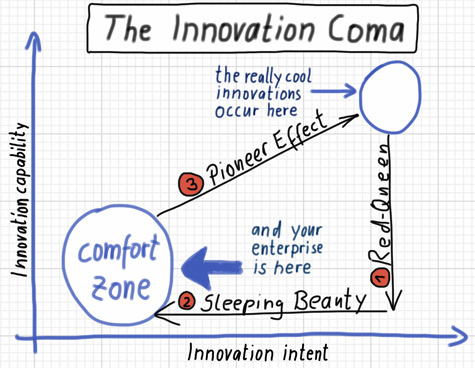
The R&D Management Conference 2014
3-6 June, Stuttgart
Management of Applied R&D: Connecting high value solutions with future markets
Most established companies recognize the need for innovation, as a driver for organic growth and as a means of differentiating themselves from competitors.
Notably managers from companies that are market leaders know how hard it is to create innovative growth business. The majority relies on the strength of the R&D department. For most companies however, R&D does mean: a lot of development and almost no research.
The same for innovation: Although busy engagements happen in the core business nothing is left for new business: Established businesses have customers, organizational structures, and prejudices that dispose them to stick with the familiar when they decide where to make their investments.
Spending on core businesses, where risks are relatively easy to identify and control, can be defended without great difficulty. Investments in the discontinuous innovations that transform industries but pose greater risks are harder to justify, and the business case for these investments is harder to make without ambiguity. Avoiding experimenting with radical innovations however is the reason why sooner or later companies are trapped in the comfort zone and suffering the innovation coma.

Radical or disruptive innovations are called that way because they have something in it that is really ‘new’. And ‘new’ in that sense means not just another color, but it is so ‘new’ that it might be in conflict with the conventional thinking.
Top managers, already struggling to maintain contact with existing customers, markets, and employees, are faced with a growing information overload. In some cases, new ideas are suppressed too quickly; in others, top managers champion projects they have an personal interest in – due to whatever reasons – and which they prefer and push.
In the fight for corporate capital, talent, and commitment, new ideas often fail to attract managerial attention, particularly in their early stages: compared with an existing business, an idea of unproven worth can seem insubstantial.
The paradox is: ground-breaking innovation requires discontinuous thinking. Organizations however are just prepared for conventional thinking.
Analyzing the innovation behavior of hundreds of companies three effects were identified:
- Red-Queen-Effect : Focusing solely on improvements and neglecting real innovations – more of the same instead of the ‘new’
- Sleeping-Beauty-Effect: missing developments in the environment, sticking to the successful business of the past
- Pioneer-Effect: Exploring, experimenting and discovering new technologies and creating new markets
It can be shown, that sooner or later most companies become a victim of the Red-Queen-Effect or the Sleeping-Beauty-Effect or both and they lose the capability to trigger Pioneer-Effects. Stuck in the comfort zone a company has to actively manage those effects: foster the Pioneer-Effect and minimize the Red-Queen- and the Sleeping-Beauty-Effect.
The punishing thing about innovation is that the contest never ends. Create a new market, and other companies come flooding in. Parry one threat, and up pops another attacker, hungrily eying your core business. Success requires being able to go beyond isolated wins to develop deep capabilities that allow companies to disarm disruptive threats and seize new growth opportunities repeatedly. It requires the ability to pioneer, to churn out successful growth business year after year, over and over again.
Links:
- Further information about the innovation roulette (german):
www.innovation-roulette.com
Kategorien: Zukunftstechnologien
Tags: F&E-Management, FuE-Management, Gastbeitrag, Innovationsmanagement, R&D, R&D Management, R&D Management Conference

